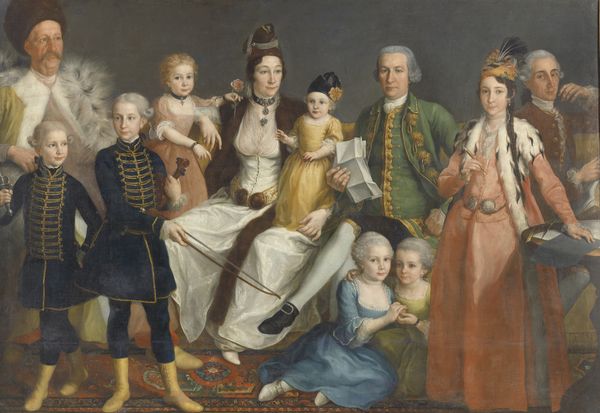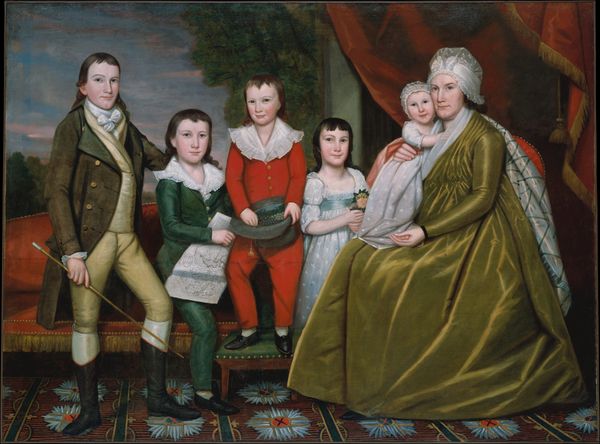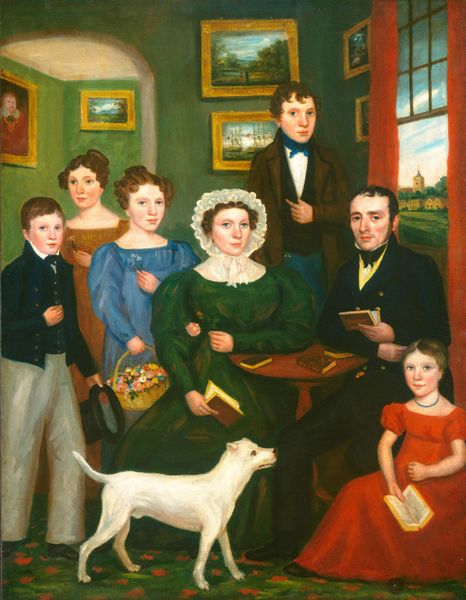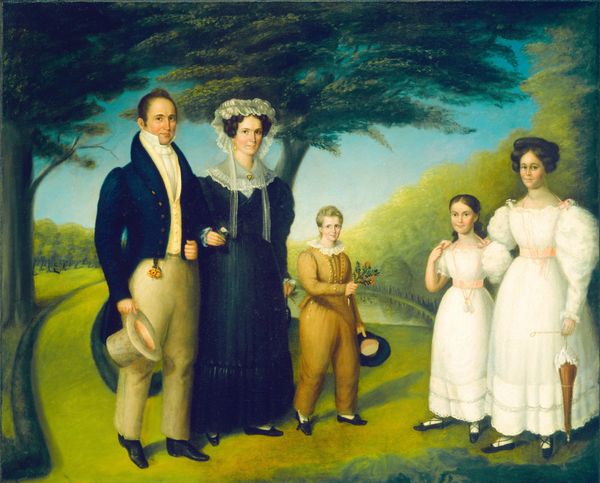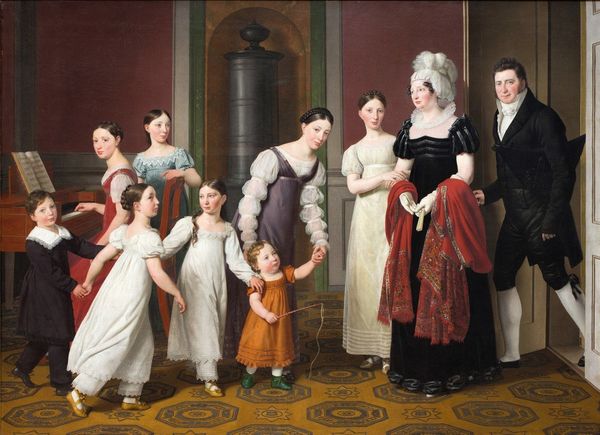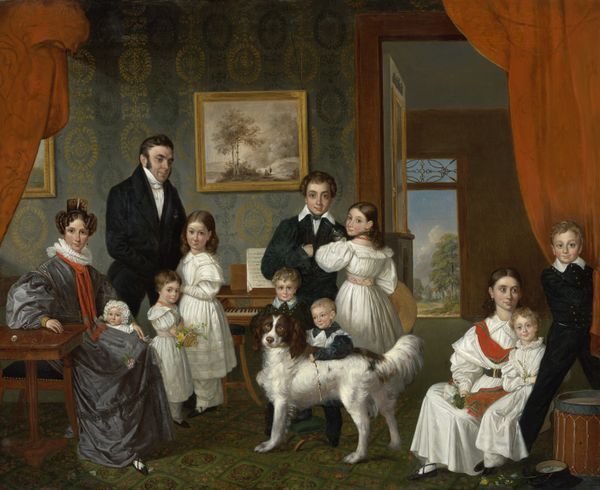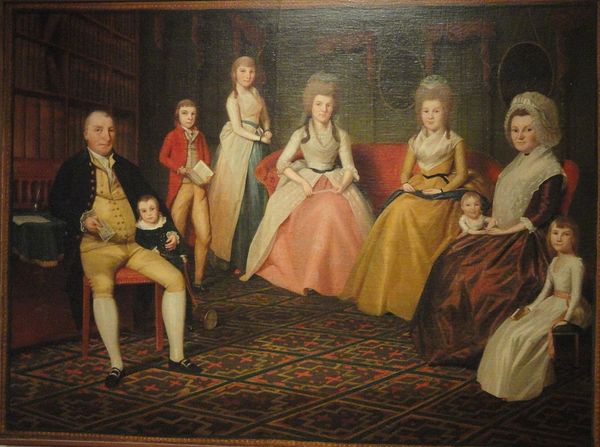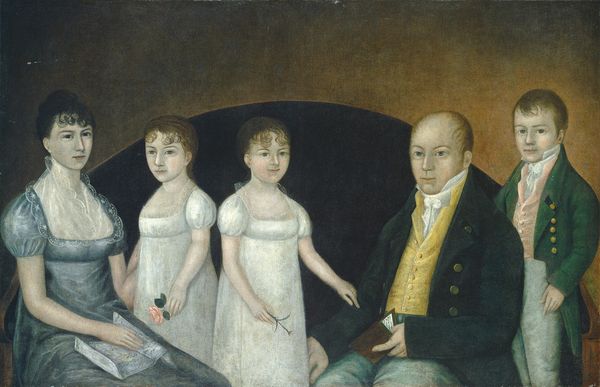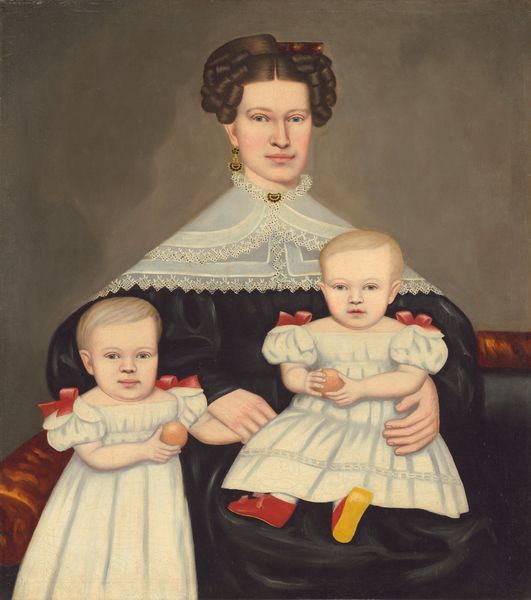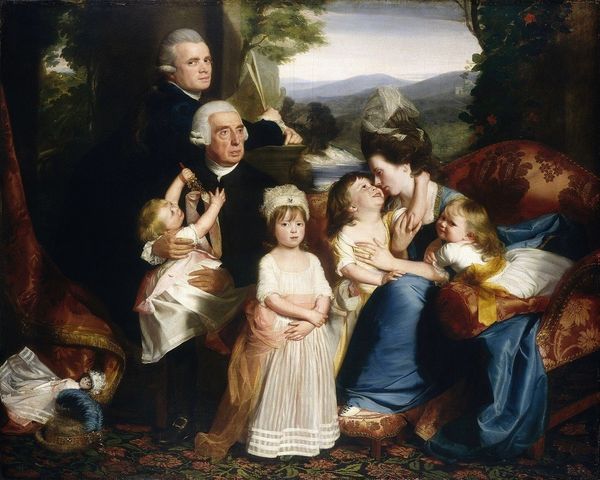
oil-paint
#
portrait
#
oil-paint
#
oil painting
#
group-portraits
#
romanticism
#
genre-painting
#
history-painting
#
facial portrait
#
portrait art
Dimensions: overall: 49 x 65 cm (19 5/16 x 25 9/16 in.) framed: 64.5 x 80 x 7.3 cm (25 3/8 x 31 1/2 x 2 7/8 in.)
Copyright: National Gallery of Art: CC0 1.0
Curator: Here we have The Cheney Family, an oil painting dating back to approximately 1795 by an unknown artist. It presents a formal group portrait of what appears to be a wealthy family of the period. Editor: My initial impression is one of constrained formality. The figures are arranged almost like dolls, creating a rather eerie stillness, wouldn’t you agree? It makes me wonder about the cost of their fabrics, dyes and how they sourced it during that period. Curator: Indeed. If we situate this work within the late 18th century, it reflects both the social aspirations and anxieties of the emerging middle class. Family portraits became a way to assert status and legacy, documenting lineage within specific gender and generational roles. Consider the position of the father as head of the household, dominating the picture. Editor: Absolutely. Note how his dark attire and rigid pose contrasts sharply with the lighter fabrics and rounded features of the women and children. I'm drawn to the surface qualities of these garments—linen, possibly cotton—and how the labor-intensive processes of creating and maintaining them shaped the lives represented here. Were these produced by domestic labor or hired hands? Curator: A pertinent question! I'd add that the presence of so many children suggests an emphasis on continuing the family line, reflecting societal expectations around women's reproductive roles. Also, consider the implications for inheritance and wealth distribution—who benefits, who doesn't, and along what gendered and racial lines. Editor: It's the composition that intrigues me, too. Notice the placement of the carpet design directing us toward the seated parents with the sofa seeming like a sort of platform, visually cementing their status in the home. It all feels meticulously arranged, carefully constructed. What do we know of floor covering production at this time? It doesn't look machine-made. Curator: Exactly. Its formal arrangement suppresses any individual characteristics in service of conveying social position. Editor: On a more intimate note, though, there’s something haunting about the flatness of the perspective and stiff expressions on the subject’s faces. Were they satisfied? Were the artists paid a just wage? So many questions when assessing these commissions from this lens. Curator: Reflecting on The Cheney Family, we've hopefully offered a few avenues for approaching these kinds of historical portrait commissions. Editor: Indeed, a dialogue bridging socio-historical context with an appreciation for material conditions and production methods. I leave intrigued by this portrait, with many questions lingering still!
Comments
No comments
Be the first to comment and join the conversation on the ultimate creative platform.
